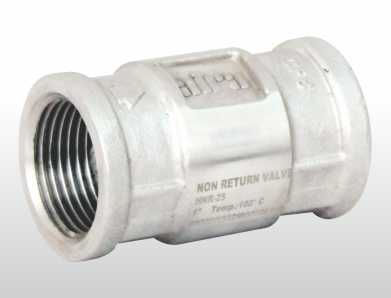Everything You Need To Know About Non Return Valves
- Aira Euro Automation
- Jan 23, 2023
- 3 min read
If you've ever wondered what a non return valve is or what it does, then this blog post is for you! We'll be covering everything you need to know about non return valves, from how they work to their benefits and disadvantages. We'll also be discussing some of the different types of non return valves and their applications. So whether you're a homeowner looking to install a non return valve in your plumbing system, or you're simply curious about how these devices work, read on for everything you need to know!
What is a Non Return Valve?
A non-return valve is a type of valve that allows fluid to flow through it in only one direction. This is achieved by the design of the valve, which includes a disc or flap that opens when fluid flows in the correct direction and blocks the flow when fluid tries to flow in the wrong direction. Non-return valves are also known as check valves or one-way valves.
Non-return valves are used in a wide variety of applications, including plumbing, automotive engines, and industrial equipment. They are often used where it is essential to prevent the backflow of fluid, such as in sewage systems. Non-return valves can also be used to control the direction of the flow of fluids in process piping systems.

The Different Types of Non Return Valves
There are several different types of non return valves, each with its advantages and disadvantages. The most common type is the ball valve, which is simple and reliable but can be difficult to clean. The butterfly valve is another popular option, which is easier to clean but not as durable. The diaphragm valve is a good choice for high-pressure applications, but it can be expensive. Finally, the check valve is the most basic type of non return valve and is often used in low-pressure applications.
How do Non Return Valves Work?
There are two main types of non return valves: check valves and ball valves. Assessment valves work by using a weighted disc or flap to seal the valve when the flow is present. Ball valves work by using a ball with a hole in the middle that aligns with the flow of the fluid. When the ball is turned so that the hole is not aligned with the flow, the fluid is blocked and the valve is closed.
The Benefits of Non Return Valves
Non return valves are an essential piece of equipment in many industries, as they prevent the backflow of fluids and gases. This means that they can protect sensitive equipment from contamination or damage. In addition, non return valves can help to improve the efficiency of a system by preventing loss of pressure.
The Disadvantages of Non Return Valves
One disadvantage of non return valves is that they can cause water hammers. A water hammer is a condition that can occur when a valve closes too quickly, causing a sudden increase in pressure. This can damage pipes and other components in the system. Another disadvantage is that non return valves can become clogged with debris, which can reduce their efficacy.
Non Return Valve Applications
Non return valves are used in a variety of applications to prevent the backflow of fluids and gases. They are commonly used in sewage and drainage systems to prevent contaminated water from flowing back into clean water supplies. Non return valves are also used in irrigation systems to prevent water from flowing back into the pump, and in wastewater treatment plants to prevent treated water from flowing back into the raw sewage. In addition, non return valves are often used in industrial applications such as oil and gas pipelines, food processing plants, and chemical plants.


Comments